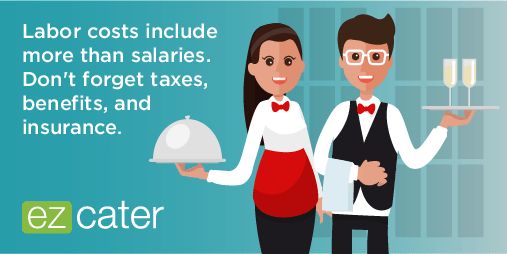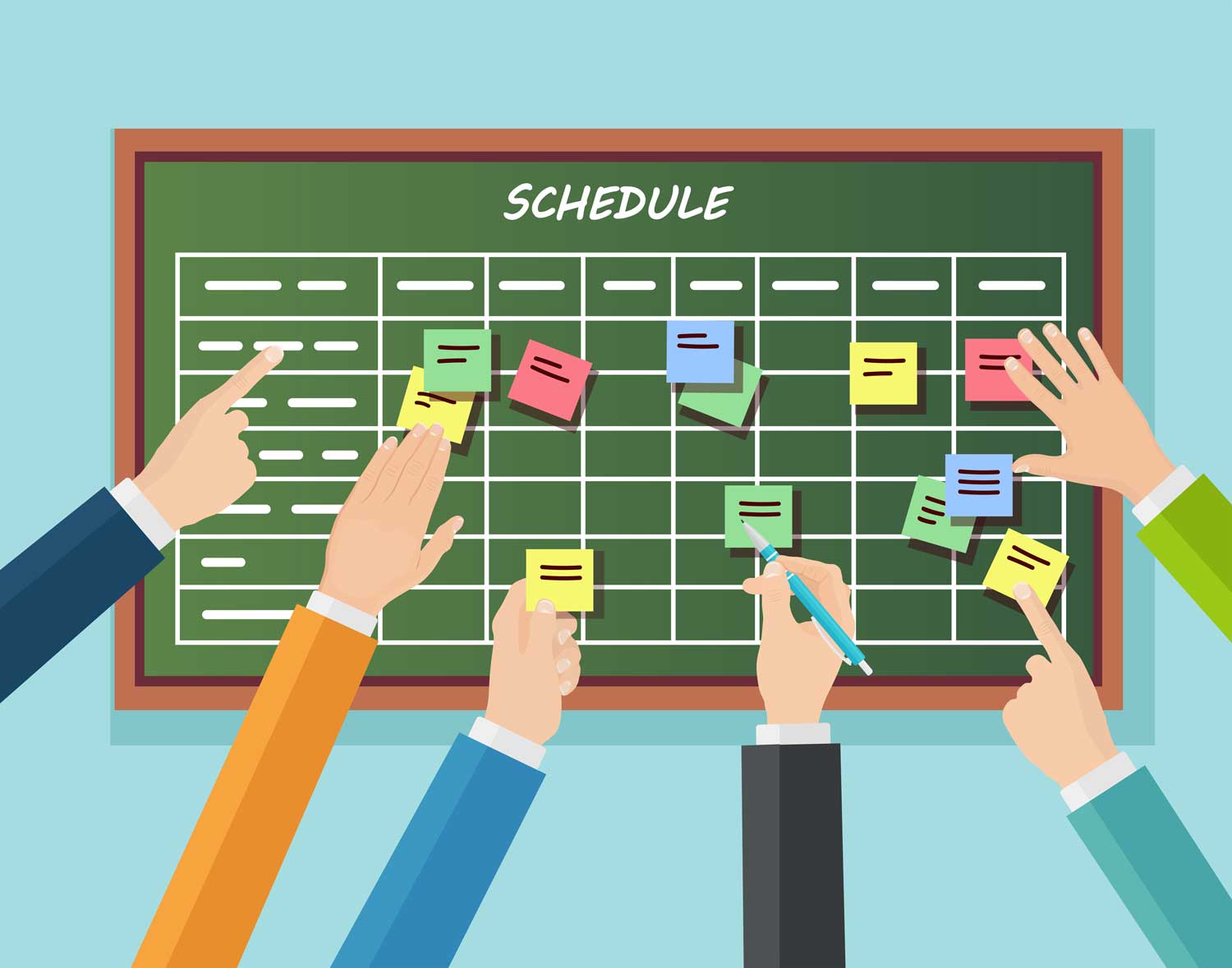Labor costs contribute to a large portion of your overhead in a restaurant and catering business. As the Houston Chronicle notes, keeping your restaurant labor costs around 30 percent is ideal. But even if you’re able to keep to that, 30 percent represents a big chunk of your top line revenue all going to one area. It’s crucial that you manage things properly so your business can be successful. If it sounds tricky, don’t worry. It’s not. With a basic understanding of restaurant accounting, you can follow these tips to managing your restaurant labor cost.
Calculating Catering and Restaurant Labor Cost
To calculate your labor costs, you first need a handle on your payroll expenses. Don’t repeat the mistake that many people make when they get started. Your restaurant labor costs don’t just include salaries. There are taxes, benefits, and insurance that factor into your calculations. If you leave that stuff out, your books might look great until you get to the end of the year and realize your profits aren’t quite where you expected. But what does that mean exactly?
Say you’re paying an employee $12 per hour. Every business offers different benefits, of course, but when you add that on, along with taxes, it could be costing you more like $15 per hour. Don’t forget those details because it’s important to calculate your labor expenses.
Once you’re able to make an accurate assessment of your payroll expenses, there’s an easy formula for calculating your restaurant labor cost percentage. Just take your total payroll expenses by the period (it’s up to you to decide whether that’s weekly, monthly, or yearly) and divide it by your total sales in the same period. Multiply that number by 100 and you’ll have your percentage.
For example, if your payroll expense for a given week is $2,500, and during that same week you brought in $9,700 worth of profits, divide $2,500 by $9,700, and you get about 0.26 or a 26 percent labor cost. That’s below the 30 percent benchmark, which is a good thing for your profit margins.
Managing Catering and Restaurant Labor Cost
Once you’ve established your labor cost, it’s time to properly manage it within your budget. Not every period will bring in the same sales. So that means your percentage can fluctuate week-to-week, month-to-month, or year-to-year. Consider these three important steps to get a handle on your restaurant labor costs and keep them as consistent as you can.
- Properly Schedule: How you schedule your staff has a big impact on your budget. Start by creating a sample budget for a week, month, or project. Identify your target labor cost and schedule accordingly. This is harder when you’re starting out, but track your sales over different periods. It should indicate when you need more people working.
- Ensure Efficiency: In restaurants, sometimes it’s slow and sometimes it’s crazy. No matter how busy your team is, you need to find ways to maximize their efficiency and productivity. Set expectations and goals for specific shifts or periods of time. If you set the pace, they will be less inclined to just suck away the clock, working, but not at full capacity.
- Tweak and Adjust: When you first start out, it may be a challenge to understand your restaurant labor cost. But you should be measuring and tracking your across different periods against your budgeted costs for those periods. If you notice your labor cost percentage is going up too high — say, it’s suddenly at 50 percent for an entire month — then it’s time to make adjustments to your schedule before it’s too late. Try tools like Click BACON or Restaurant 365 to help you stay on track.
Compliance and Regulations
When it comes to compliance with labor laws, there are two main buckets you should be thinking about: tips and overtime.
- Tips: Every state has different laws on how to define, distribute, and tax tips. In fact, they may differ dramatically in some cases. Usually your payroll company will have some advice on how to properly handle employee tips. Even so, the Department of Labor provides some basic guidelines for tip reporting. Get started with a system of providing written statements to your employees. That way there is no confusion about how tips have been paid out.
- Overtime: Similar to tips, each state will treat overtime and break requirements differently. And likewise, the Department of Labor offers guidelines on how to treat overtime wages. Create a policy on overtime and breaks (that fits within the regulations of your state), and be clear about it. If people take advantage, it can cost you a lot of money, or worse, open you up to liability.
What Should You Pay Your Staff
You can’t always pay your staff as much as you would like. Margins are tight in the restaurant business. Each state has rules about the minimum wage for tipped workers. So make sure you understand those regulations. But also remember that the restaurant and catering industry offers other perks that your employees are looking for.
Mainly, people like to work in the food service for the flexibility. With that mind, the best way to build relationships and create a positive work environment is to work with people to create a schedule that allows them that flexibility, while offering a pay rate that’s competitive and matches their skillsets. People don’t often leave restaurant jobs because of the pay. Just remember that the flexibility you offer needs to fit within your budgeted labor costs. You still need a team that comes to work when you need them.
Looking to grow your catering business? Sign up with ezCater.










